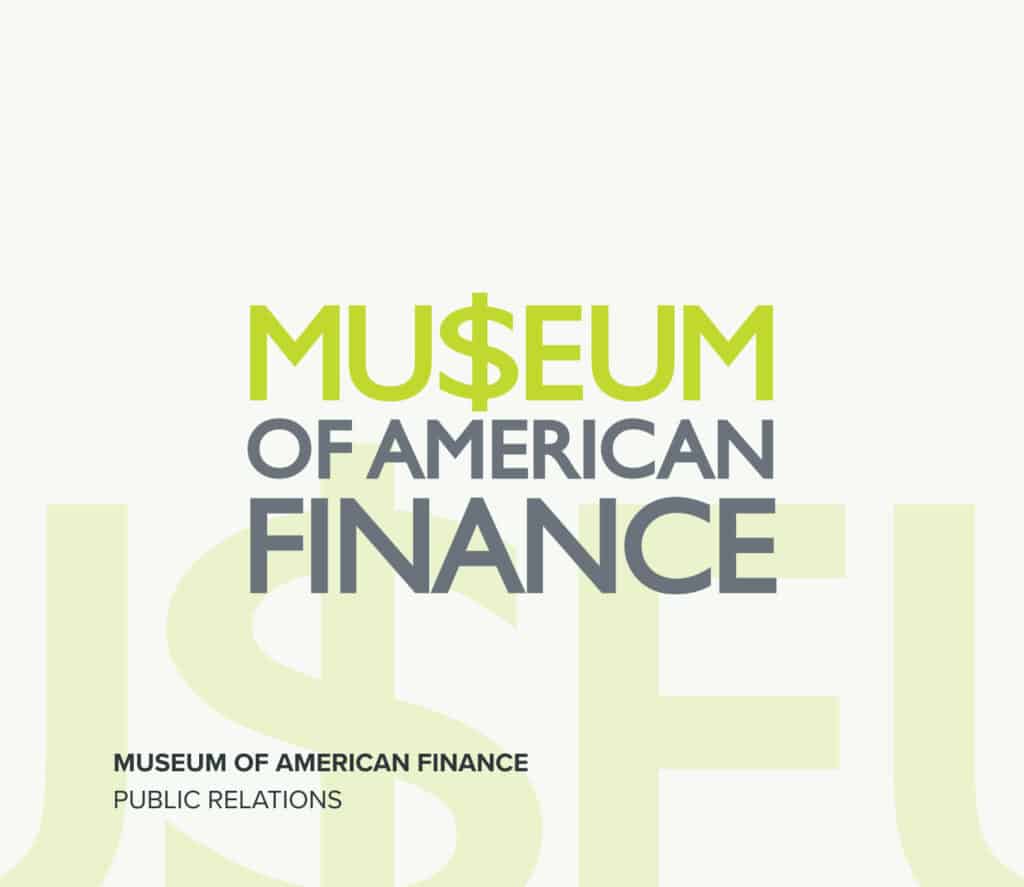Effective Marketing: Making Financial Services Valuable to Millennials and Gen Z
Target audience alignment is a key consideration for the most successful marketing teams. By ensuring segmentation and messaging are in line with the expectations of specific consumer bases, brands, and financial services firms in particular, can gain additional market share.
In the shifting financial consumer landscape, one notable change has been the rise in attention paid to the Millennial and Generation Z (Gen Z) consumers. Often overlooked as younger generations less likely to catch the eye of financial institutions, these demographics are actually prime for attention and specially geared messaging and financial products.
Millennials encompass those individuals who became adults roughly at the turn of the century, or millennium. According to Pew Research, individuals born between 1981 and 1996 are considered Millennials, placing them now between the ages of 28-43 years old, a demographic in prime need for financial services offerings. Gen Z follows right behind, having been born between 1997 and 2012, and positioning them as a segment fast approaching, if not already arriving at, bankable consumers status.
All of this adds up to making marketing to Millennials for financial services, and their Gen Z counterparts, a vital part of any marketing strategy. The challenge lies in demonstrating value in financial marketing to Gen Z and Millennial consumers while their perspectives on money management and banking institutions take a unique turn.
A Younger Take on Managing Finances
Financial institutions (FIs) looking to remain competitive need to account for their existing (and aging) consumer base while taking advantage of the opportunity that comes from a growing, younger target market. Grouping younger consumers together is a tempting, oversimplified approach to market segmentation, since how Gen Z and Millennials differ financially is quite nuanced. In addition, these consumers have taken different approaches to managing their finances than their predecessors, making marketing to Millennials a challenge for traditional FIs.
When it comes to having bank accounts at traditional institutions, younger consumers are taking less conventional routes than older generations. Marketing to Millennials research shows that while they are considered 70% banked, Gen Z comes in at just 47%, making them a significantly underbanked demographic.
Some of this can be attributed to financial obstacles including lower savings amounts and higher debt. Millennials carry 30.06% of the national student loan debt, and consumers under the age of 35 make up nearly 40% of new mortgages. On top of this, Millennial and Gen Z resistance to banking comes also from a different consumer mindset. Topics such as sustainability, political outlook, and global economics are shaping decision making and overall attitudes. According to Deloitte, just 40% of Gen Z and 48% of Millennials think their personal financial situation will improve moving forward.
FIs can benefit from identifying these tendencies and working to provide products backed by marketing campaigns that are sensitive to these perspectives and resonate more deeply with consumers. FIs should also bear in mind that Millennials comprise 21.71% of the population, and Gen Z is close behind at 20.69%. While retaining the business of an aging, existing consumer base, FIs can also bolster their growth and future retention numbers by placing much-needed attention on younger financial consumers by marketing to Millennials for financial services.
Understanding Non-Traditional Financial Mindsets for Millennials and Gen Z
Several factors go into the reticence exhibited by younger consumers to go with traditional banking products. When it comes to how to garget Millennials and Gen Z with financial services and products, FIs must address trust, digitization, and personalization. To conduct effective marketing to Millennials for financial services, FIs should better understand these influences and how they shape Millennial and Gen Z decision making.
Building Trust
Having experienced the unrest and uncertainty of the mid-2000s recession, Millennials are much less likely to trust financial institutions without first doing a lot of research around reputation. FIs can respond to this need by remaining transparent with regard to business practices, product inclusions, and data management and sharing.
With that trust can come loyalty, a component needed by FIs in order to retain business. Gen Z financial services consumers are notorious bank switchers, with one survey showing 42% changing institutions within 12 months to find better products and service. And while 80% of baby boomers (those born between 1946 and 1964) trust and remain loyal to their FIs, 75% of Millennials would leave their current bank for a better mobile experience.
Going Mobile
Which brings us to the importance of mobile for modern-day banking consumers. Twenty-eight percent of financial consumers under the age of 45 note mobile app capabilities are a primary factor for choosing and valuing a FI. Growing up with more regular access to technology, Millennial and Gen Z consumers expect accessibility and convenience when it comes to interactions with brands from nearly every industry.
Online and mobile access are critical for everything from checking account balances to managing deposits. One study showed that 99% of Gen Z and 98% of Millennials use mobile banking apps (while only 69.5% of baby boomers do the same). When conducting financial marketing to Gen Z and Millennial target markets, FIs should underscore their multichannel offerings and highlight ease of access, security, and innovation.
Getting Personal
With so much data available on consumer behaviors, younger generations have also come to anticipate more personalized experiences with their financial institutions. These consumers are not only comfortable with technology, but expect FIs to present them with products, services, and messaging that reflect their unique needs, often on a one-to-one basis.
Seventy-four percent of banking consumers now expect personalized experiences, and 60% of Gen Z consumers believe personalization leads to more positive experiences, which are more likely to lead to retention for the FI. Marketing to Millennials for financial services clearly needs a personal approach as FIs demonstrate they understand the unique use cases required to provide Millennial and Gen Z financial services.
Marketing Must-Haves for Younger Generations
With a better understanding of what is most important to younger consumers, FIs can more successfully penetrate these market segments for improved outcomes of their own. Essential to this strategy is to create a comprehensive marketing approach for each specific demographic, understanding that the tactics of the past may still work on older consumers, but Gen Z and Millennials are looking for a new take on how they engage with financial services.
Demonstrate understanding of unique pain points
Millennials have the second highest amount of average debt in the United States, while Gen Z has the fasted growing credit card debt. While baby boomers are grappling with retirement savings, younger generations are looking for solutions to savings and debt management.
FIs can message around these challenges by providing helpful advice and supporting products that can address these specific concerns. Skipping over differentiated baking options is a missed opportunity for FIs to identify with and obtain market share for demographics like Gen Z and Millennials who have different concerns.
Applying knowledge of varying perspectives can also help with marketing to Millennials for financial services. With concerns around trust and having seen the impact of the 2008 recession on their parents’ finances, Millennials are more likely to be responsive to messaging that underscores compliance, transparency, and values.
For Gen Z financial services marketing, messaging should acknowledge the importance of social issues such as sustainability and diversity. Products geared toward the life stages these consumers are encountering in real time can go a long way toward helping FIs gain market share.
Have a rock-solid digital roadmap
Most modern FIs have established digital operating processes that help them take their services online. However, Millennial and Gen Z consumers are looking for omnichannel digital solutions that also personalize their interactions with brands without sacrificing service. Digital innovation remains critical to decision making for Gen Z financial services, with 72% saying they use digital-first neobanks.
FIs should shape their tech roadmap accordingly to not only power customized consumer engagement but also include the latest in fraud detection, mobile access, and automation. From data-informed banking options to intuitively designed apps and websites, younger generations are looking for streamlined and cutting-edge digital experiences when choosing, and staying with, a financial institution.
These experiences should also consider the role of technology in customer service. Seventy-three percent of Gen Z consumers value customer experience as a key factor in choosing an FI. Innovations such as artificial intelligence offer FIs an opportunity to further engage with younger consumers, providing personalized insights into financial data and helping them make critical financial decisions. While traditional bankers may be wary of AI-powered solutions, 55% of Millennials are open to AI data processing if it results in better banking.
Educate your audience
While younger consumers are more likely to choose their own financial products and providers than relying on the decisions of their parents (less than half of Gen Z does so), they might overlook a brand that seems more traditional without having the right information to make an informed decision. With 51% of Gen Z and 49% of Millennials naming a FinTech brand as their most trusted, traditional banking options that have modernized need to spread the word.
It’s up to financial institutions to communicate their products, services, and tech offerings effectively to Gen Z and Millennials to appropriately tap into the market segment. FIs should emphasize technological advances, security, personalization, and the products in their marketing to Millennials for financial services. Separate messaging is clearly needed for Gen Z financial services who are looking for honesty and value in a marketplace saturated with inauthentic messaging. By educating these consumers, FIs can attract more business and separate themselves from outdated perspectives or brand identities.
What’s Next for Financial Marketing to Gen Z and Millennial Consumers
Marketing to Millennials research shows that, with 30% of them underbanked, FIs have a crucial opportunity to demonstrate what makes them different while appealing to the specific interests of a significant consumer generation. Gaining momentum are Gen Z decision makers who are approaching important financial decision-making milestones as they transition into adulthood and shop for solutions that meet their standards.
While Gen Z and Millennial consumers may be better suited for different arrays of financial products based on their life stages, they share several perspectives bound to shape the future of marketing for FIs. Digital-first offerings backed by security and trust are key to engaging with tech-savvy, younger consumers. Personalizing offerings and messaging across demographics and individual decision makers through engaging user experiences and innovative technology can help not only with acquisition but retention efforts.
FIs that embrace specific target segments based on generational trends and data-driven insights will be most likely to find success with the younger consumers leading the next wave of banking customers.


